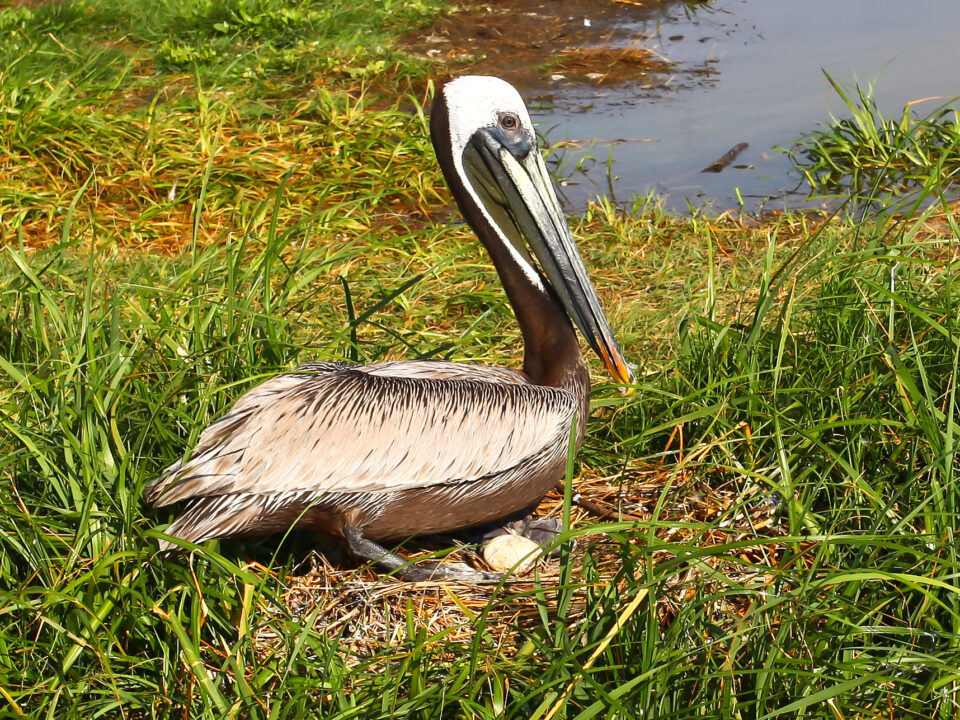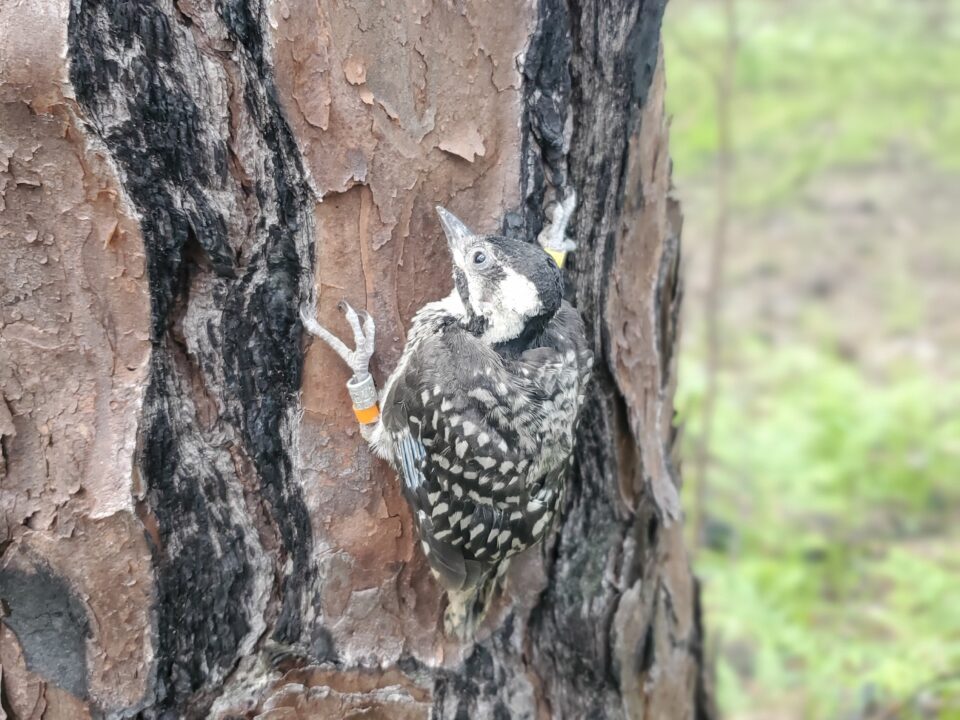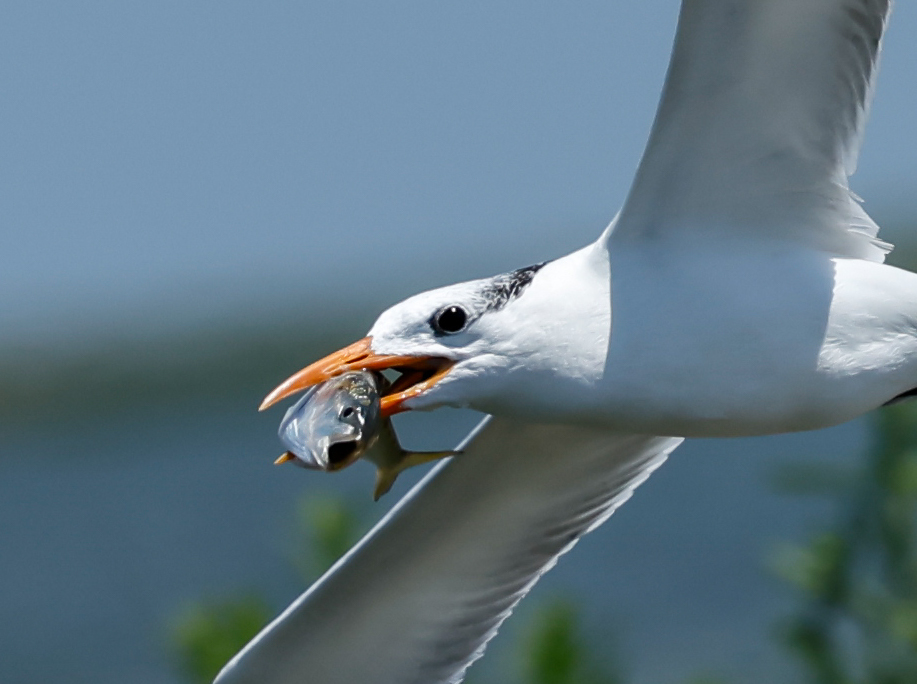Banding Woodpeckers

Grace Briefly Visits Surry County 8/21
August 22, 2014Camellia Visiting Suffolk, VA Aug 25
August 26, 2014
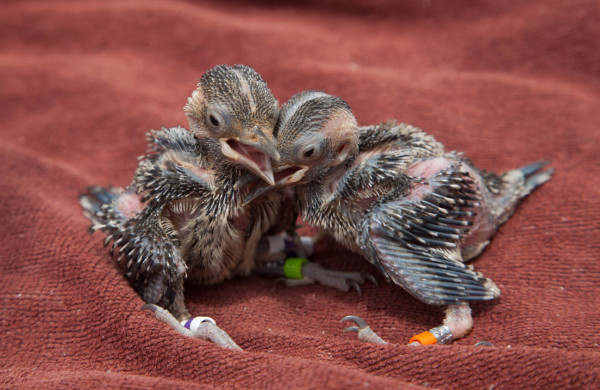
A brood of two red-cockaded woodpecker chicks stand on a towel just after they were banded. Both of these birds are females and are on the older end of the banding window. Photo by Bryan Watts.
For endangered red-cockaded woodpeckers, banding day is the culmination of more than a month of careful preparation. The season begins in early April with 4AM wakeup calls, ferry rides, and walks through quiet woods to take up positions around roost trees before birds begin to emerge. The breeding male sounds reveille each morning, calling the clan out of their cavities to muster within a common rallying area. The birds interact here before moving off to forage. This short social event is the best time of the day to get a headcount and to identify each individual within the breeding group. CCB biologists led by Mike Wilson spend two weeks each spring systematically moving through all of the breeding clusters within Piney Grove Preserve to see who has survived the winter. This spring check is one of two population assessments during the year but is also an opportunity to get an early read on the upcoming breeding season.
Woodpecker banding often draws a crowd of enthusiastic onlookers. Mike Wilson bands a brood of woodpecker on Piney Grove Preserve with the help of others. Video footage by Bryan Watts.
The egg vigil begins during the third week of April. Nest cavities are checked every four days for the appearance of the first eggs. A peeper scope is inserted into the cavity from below to view its contents on a small video screen on the ground. Knowing when the eggs are laid and, by association, when the chicks will hatch is critical to successfully banding the brood later in the season. Young are banded within a narrow window between the age of five and ten days. Before five days old the tarsus is too short to hold the full band combination. After ten days old their eyes open and they are considerably larger, making it more difficult to extract them safely from the cavity. Once the hatching date is known, biologists schedule return visits on dates that allow broods to be banded when they reach the optimal age.
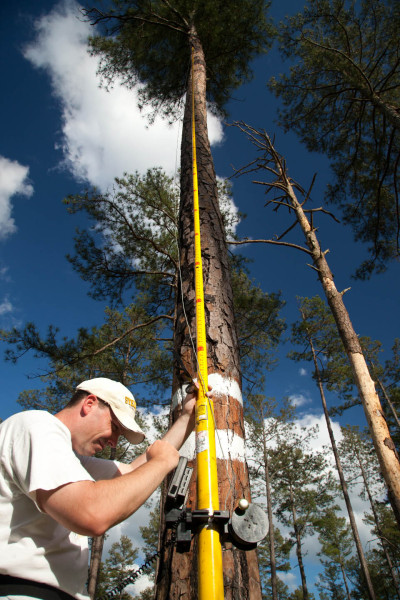
Mike Wilson uses the peeper scope to inspect the contents of a nest cavity on the Piney Grove Preserve. This scope is a valuable tool used in monitoring nesting activity. Photo by Bryan Watts.
Banding day is always a special event for both biologists and woodpeckers. Nest cavities range in height from 30 to 60 feet, and Swedish climbing ladders are used to reach the cavities. The ladders are light weight and come in ten-foot sections that are secured and stacked as the climber ascends. For most cavity trees, they are ideal equipment because they are relatively easy to install and do no damage to the tree. Once the nest cavity is reached, young are carefully extracted through the entrance with a noose and lowered to the ground for processing.
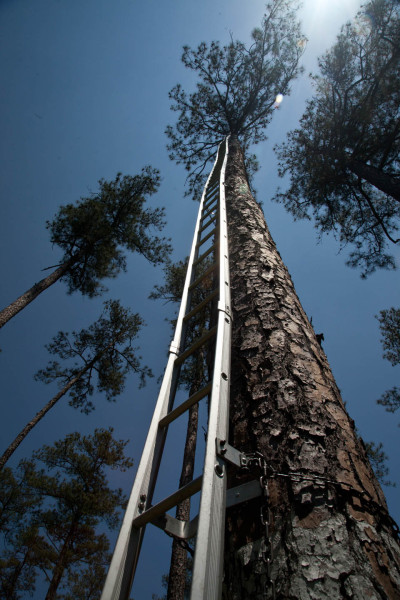
Swedish climbing ladders erected on cavity tree in Piney Grove Preserve. These ladders are standard field equipment used in woodpecker banding. Photo by Bryan Watts.
The young are inspected for condition and age and then banded and weighed. They grow and change in appearance so rapidly that they are easily aged to the day. Each bird receives a numbered aluminum band and a unique combination of color bands that will allow biologists to identify the bird throughout its life. Having the entire population banded in this way allows us to see who remains in the population and to track their genealogy over time. Once banded and weighed, the brood is returned to the cavity.
Bryan Watts returns young to cavity after banding using a rope lanyard and Swedish climbing ladders. Ladders are removed after the young are safely returned to the nest. Video footage by Bryan Watts.
All of the young produced in the population are checked again in the first three weeks after fledging. Still dependent on the adults, the young are located and identified with spotting scopes to see who has survived to fledging age and to determine gender. In the first few weeks after fledging, males retain the red patch of feathers on the crown for which the species was named. The red cockade is lost by early fall, making gender determination much more difficult.
For red-cockaded woodpeckers and many other species, banding is a tool that allows us to collect demographic and other data that facilitate management decisions. CCB is fortunate to work with great partners, including The Nature Conservancy, Virginia Department of Game and Inland Fisheries, and the U.S. Fish and Wildlife Service. All of these organizations are devoted to the recovery of the woodpecker population in Virginia.
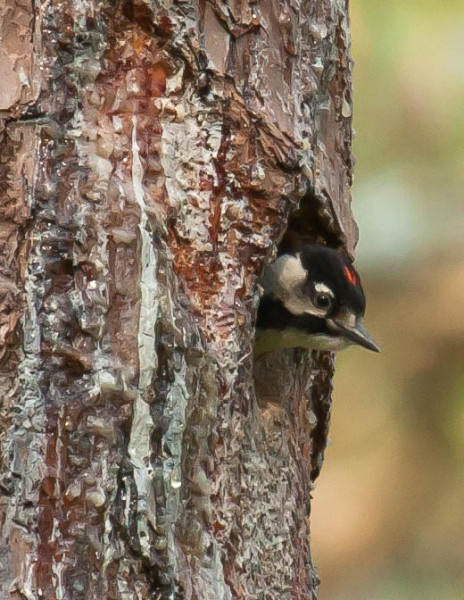
Woodpecker nestling within a day of fledging peers out cavity entrance. The red cockade signifies a male and is only present for a short period after fledging. Photo by Bryan Watts.
Click here to view a photo gallery of red-cockaded woodpecker work at Piney Grove Preserve.
Written by Bryan Watts | bdwatt@wm.edu | (757) 221-2247
August 25, 2014

